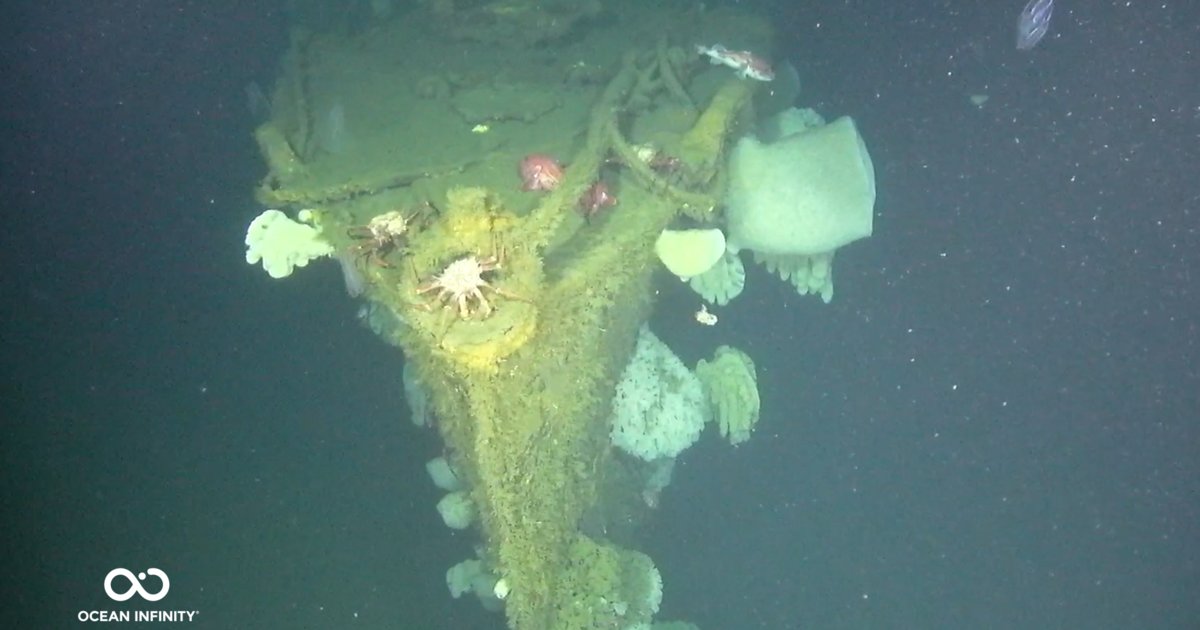The discovery of the USS Stewart, a World War II destroyer with a remarkable history, has captivated maritime historians and researchers. This seemingly ordinary ship boasts an extraordinary tale, switching allegiances between the US and Japanese navies before its intentional sinking in 1946. Its subsequent rediscovery, seventy-eight years later, is a testament to technological advancements in underwater exploration and a collaborative effort between various organizations dedicated to maritime heritage preservation. The journey of locating the “Ghost Ship of the Pacific,” a name earned through its service under both opposing flags during wartime, exemplifies the unpredictable twists of history and the enduring allure of sunken vessels.
The USS Stewart: A Ship of Shifting Allegiances
The USS Stewart’s wartime service was far from ordinary. Commissioned into the U.S. Navy, it initially served in the Asiatic Fleet, stationed in Manila. Its involvement in the Pacific Theater placed it directly in the heart of intense naval combat. The ship sustained damage during fighting in February 1942, but a bizarre twist of fate trapped it within a repair drydock in Java, Indonesia. This unforeseen circumstance left it vulnerable to capture when Japanese forces advanced, leading to its eventual commandeering by the Imperial Japanese Navy. The Stewart operated as a patrol boat for the Japanese, its actions unknowingly cementing its reputation among Allied pilots as the enigmatic “Ghost Ship of the Pacific.” This surprising turn of events paints a fascinating picture of the fluid dynamics of warfare and the unexpected fates of individual ships caught in global conflict. The ship’s capture underscores the shifting alliances and strategic uncertainties prevalent in World War II’s Pacific theatre, highlighting how vessels could swiftly change sides and their roles within larger battles.
From Enemy Lines Back to the U.S. Navy
Following the war’s conclusion, the USS Stewart was surprisingly recovered in Kure, Japan. Remarkably, the U.S. Navy reacquired and recommissioned the vessel. This remarkable turnaround emphasizes the determination of post-war forces to reclaim assets and reassess their strategic priorities. Returning to its original flag, it fulfilled one last duty as a target ship in a naval exercise before it met its final end: purposeful sinking off the California coast. This unique dual service, under opposing banners, adds a layer of historical significance to the vessel’s legacy, emphasizing the global impacts and long-lasting effects of war and its subsequent impact on resource management and maritime conflicts.
The Discovery: A Technological Triumph
Locating the wreck of the USS Stewart, deliberately sunk to the depths of the Pacific Ocean, seemed an insurmountable task for decades. However, a collaborative effort between the Air/Sea Heritage Foundation, NOAA’s Office of National Marine Sanctuaries, the Naval History and Heritage Command, Ocean Infinity, and SEARCH finally cracked the mystery. Employing advanced marine technology played a critical role in the success of the mission, demonstrating advancements that finally overcame previous challenges presented by ocean depth, limited visibility, and wide search areas. This technological breakthrough underscores not just the capabilities of modern marine technology, but also the growing ability to address significant historical mysteries of the oceans.
Autonomous Exploration and Sonar Imaging
The success of the mission hinged upon Ocean Infinity’s deployment of cutting-edge autonomous underwater vehicles (AUVs). These unmanned submersibles systematically scanned the vast expanse of the ocean floor over 24 hours, accumulating vast quantities of data. The resulting data review revealed the clear image of the long-lost vessel lying 3,500 feet below the surface. This technological capability changed how historical vessels could be recovered, enabling deeper and more thorough explorations without human risk. The AUVs’ sonar capabilities, essential in locating the ship, showed the surprisingly well-preserved state of the wreck. It rests on the ocean floor, mostly intact, offering an unprecedented glimpse into the naval architecture and technological developments of its era. Furthermore, the success illustrates the remarkable technological advancements propelling the future of underwater research and exploration of our planet’s vast maritime landscapes.
The Legacy of the USS Stewart: Preserving History
The discovery of the USS Stewart is far more than just finding a lost ship; it’s the recovery of a critical piece of naval and military history. The remarkably well-preserved wreck offers an unparalleled opportunity to examine the technological advancements of early twentieth-century naval design, preserving valuable insights into shipbuilding practices and warfare strategies. The ongoing examination promises data that can enhance our understanding of how technology evolved and responded to the changing conditions and needs of maritime combat and international conflicts.
Historical and Scientific Value
Data collected through sonar scans, remote-operated vehicle (ROV) surveys, and video inspections provide a detailed picture of the ship’s condition and surrounding environment. This material holds significant value for researchers studying naval architecture, maritime archaeology, and even marine ecology. The detailed examination enables historical analysts and conservationists to learn about the technology deployed by World War II era ships. By observing the state of preservation of the USS Stewart, researchers can deepen their insights into the natural deterioration of maritime structures, influencing future research endeavors in protecting our cultural legacy from further decay and loss. Beyond historical insights, the study area’s survey data can be valuable in determining its natural and historical habitat and supporting the local environment management by NOAA’s Cordell Bank National Marine Sanctuary.
Take Away Points
- The discovery of the USS Stewart’s wreck represents a significant milestone in maritime archaeology and naval history.
- The use of advanced autonomous underwater vehicles played a crucial role in locating the long-lost vessel.
- The remarkably well-preserved condition of the wreck offers invaluable insights into naval architecture and technology from the early twentieth century.
- The research gathered from this discovery enhances our understanding of World War II naval history, ship design, and marine ecology.




